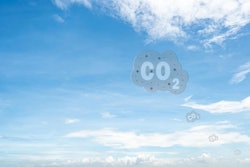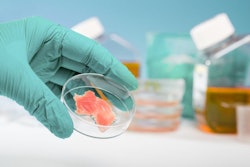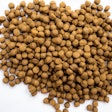
Portable carbon capture project might bring down the cost of algae for use in aquaculture.
It’s not every day that you fit the solution to two problems into a single shipping container, but new startup Algiecel hopes to do just that.
Started in May 2021 by Unibio founder Henrik Busch-Larsen, Algiecel aims to provide small to medium-size industrial operations that produce CO2 emissions with “carbon capture as a service,” as Busch-Larsen describes it. While leading Unibio, Busch-Larsen said, he encountered several technologies intended to capture the CO2 emitted by Unibio’s single-cell fermentation process. But all these technologies were time consuming and far too expensive to implement, Busch-Larsen said.
Algae has well-known carbon absorbing properties, Busch-Larsen said, so his new company plans to use algae’s ability to convert CO2 to oil and protein-rich biomass to deliver compact container-based plants that can be readily installed at smaller industrial plants. The company launched its first pilot project at the Danish Technological Institute in June.
“What most carbon capture technologies have in common is … these big expensive fixed installations,” Busch-Larsen said. “If you envision you’re the CEO with this CO2 problem, what you need to do is make an agreement with us, make sure you have the power capacity and space available for our container units, and some CO2 feedstock and water. That’s it.”
While the algae-based technology is already proven in theory and through experience with previous projects, Busch-Larsen said, what Algiecel will need to establish is an innovative business model that renders carbon capture the obvious economic choice for his fellow CEOs. He believes selling the algae-based products produced in the container units and splitting the revenue with their industrial clients will allow Algiecel to offer customers a potential return on their investment in carbon capture. The cooperative model and low-cost, containerized plants may also enable Algiecel to compete with other providers of algae-based products on cost, Busch-Larsen said.
“If you have a huge expensive production plant, you need higher prices on the other side of it,” he said. “We focus on building something that is relatively cheap.”
Algiecel is talking to potential offtakers and is exploring opportunities in the aquafeed and human food sectors, he said, though he anticipated larger sample products may not be available for another six to 12 months.









